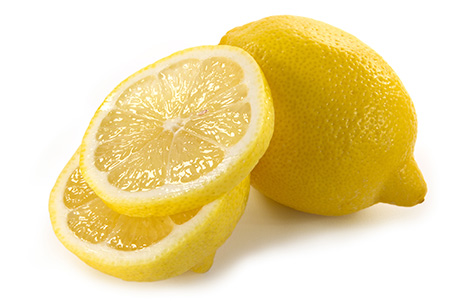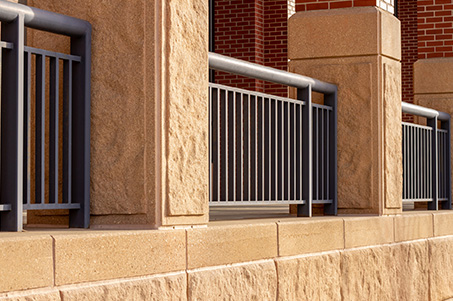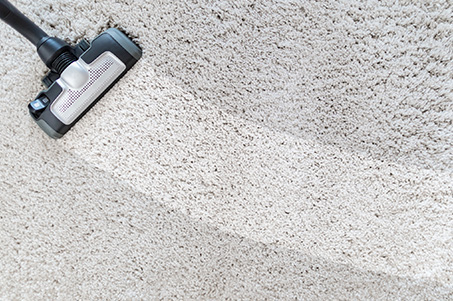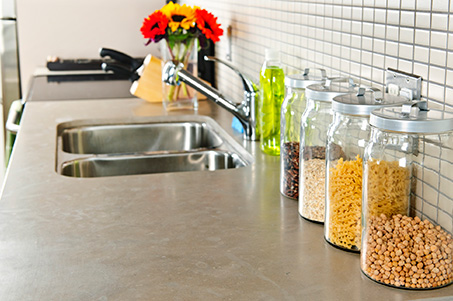I'm sorry, I think you mythunderstood me
April 14, 2022
 It's kind of funny what people who should know better will say about common stone failures or issues.
It's kind of funny what people who should know better will say about common stone failures or issues.Over the past several years, we have heard many stories about the reasons stone will fail, turn color, fade, and so on. Many are funny and most are just plain false. Here's a sampling you may enjoy
A Warped Sense of Humor
Many seasoned installers who have tried to install green marble tiles with ordinary thin set or other water-based setting materials have experienced warping problems. Here are two ways we've heard them explained.1. Myth: "Green Marble will warp because it contains living plant material. As water is added to the marble, the plants start to grow and this makes the marble warp." We nearly fell over laughing, but he wasn't kidding. He really thought this was the reason.
2. Myth: "Green Marble will curl on the edges because the installer did not put enough setting mortar on the edges. The green marble will have a tendency to lift off the floor where there is no mortar and hence will curl." While not quite as outrageous as the first explanation, it is still just as wrong.
Truth: The real reason green marble warps is a condition known as hysterisis. Green marble is very sensitive to moisture. When water enters the stone, it causes the marble to release any internal stress, thus causing it to warp.
Home Sweet What?
3. Myth: "Your stone floor needs to be homed!"Truth: No, this is not a spelling mistake the word used was "homed." We have run into several sales people who have called the honing process "homing." Maybe they also worked with pigeons, but we've never heard of homing a floor. The proper term, of course, is "HONE," which means to abrade a stone.
"Plop, Plop, Fizz, Fizz "
4. Myth: "Your stone floor has an effervescence problem."Truth: The key word here is "effervescence." Let's clear this up right now. Efflorescence is the deposit of soluble salts on the surface of the stone that is caused by water that carries the salts from the setting bed of the stone to the surface; it is often deposited as a white powder-like residue on the surface of the stone. Effervescence is what happens when something fizzes. A good example is when you drop a tablet of Alka-Seltzer into a glass of water. The fizzing is referred to as "effervescence." We've never seen a stone effervesce unless someone was pouring acid on it!
5. Myth: "Sealing your stone will help with your efflorescence problem."
Truth: We've heard so-called experts instruct people with an efflorescence problem to seal the stone as a remedy. This is wrong. Sealing will only block or reduce the pore size of the stone, which will not only cause more efflorescence, but it could also cause spalling, which is when the stone flakes at the surface.
Are You Cracked?
6. Myth: "That's not a crack, it's a fissure!"Truth: Many fabricators will try to blame cracks that occur in stone installations on natural fissures that occur in the stone. Sometimes they are right and sometimes they are wrong. If you look up the word "fissure" in the dictionary, guess what? A fissure is a crack. The distinction they are trying to make is between fissures, which are naturally occurring as part of the formation of the stone and cracks (more appropriately called "breaks") caused by external forces on the stone. Of course, the most likely place for a break to occur is on a natural fissure. Consequently, definitions need to be clarified and the stone needs to be examined carefully to determine if natural fissures are at risk of becoming breaks during normal usage.
Would You Like Some Salad With That?
7. Myth: "To remove oil from stone, saturating it with water will force the oil out."Truth: Since it is true that oil floats on water, you would think this makes sense. But trust us, it doesn't work. The oil is trapped in the pores of the stone and no amount of water is going to force it out. The best way to remove oil from stone is with a poultice and a degreasing chemical. For specifics and poulticing instructions, see www.stoneandtilepros.com/stain-removal-application/.
8. Myth: "Just use some vinegar and water to clean your marble or limestone."
Truth: Generally folks in the stone business know better, however this is often recommended by tile installers. Don't do it! Vinegar is an acid and will etch calcium-based stone. Marble and limestone are generally the most susceptible, but some types of granite will also be damaged by vinegar.
Stones Can Be So Vein!
9. Myth: "If it's got veins, it's marble."Truth: This is a fib we hear all the time. Many people in the industry believe that if a stone has veins, it must be marble. This is totally false. Veins can also be found in granite and limestone.
You Make Me Sick!
10. Myth: "Granite countertops harbor bacteria and emit harmful radon gas."Truth: This is absolutely FALSE! NIOSH and the CDC have no reports of granite or any other stone used as a countertop being unsafe. If stone were unsafe or unsanitary, why would it be used in food laboratories or sold as cutting boards? There has been no known proof of any illness caused by using stone as a countertop. And as for the rumors that granite contains harmful radon gas there is so little radon in granite that you would have to live to be 10,000 years old for it to have an ill effect on you. There is likely more radon coming from the ground and the concrete that your house is built on.
This article is one of a series of articles written and published on behalf of SurpHaces PRO Partners





